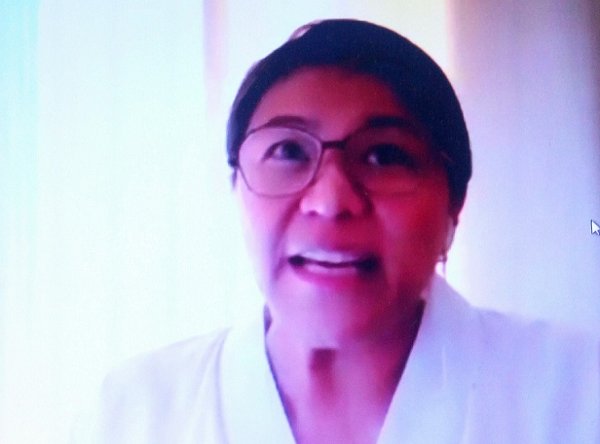It’s all about making your five senses help you in the dim seasons of your lives. All it takes is to be present for at least four minutes and 11 seconds for you to climb out whole and intact.
In her talk at the webinar on “The Wondrous Weirdness of Modern Art and How This Helps Us Understand Mental Health,” sponsored by the Ateneo Art Gallery,” Gang Badoy Capati said there is a Venn diagram that shows how art history and mental health overlap. She called art a precursor and a prophet of the geopolitical plane.
She is the lead trauma specialist of Project: Steady and advocate for the youth volunteerism movement through Rock Ed Philippines, where she is also a prime organizer of disaster relief operations.
She showed a slide of Henri Matisse making art in his old age. Although he was legally blind, bedridden and in pain, he still produced in his late age because the process of art is “what makes it valuable.” The sight of him pushing on also pushes the viewer to consider it as a metaphor for modern art and mental wellness.
She defined the latter as a “journey, not a linear one but a nebulous progression.” She advised the seeker to stop looking at a framed object—“don’t stop there. Even the best and the most loving parents have damaged us. Sometimes we don’t know there are wounds. We’re not done, not framed. We’re an unfinished, untitled or unsigned work.”
Capati, who worked in the past with hardcore criminals in a maximum security prison and had won a TOWNS award for alternative education, likened traumas to “time machines” that one remembers at certain dim moments in one’s life. She cited the example of author, chef and travel documentarian Anthony Bourdain who, in his childhood, used to sit in the dark for hours waiting for his mother to come home and insert the key that would open the front door.
He might have been reliving those moments when he experienced a dark night of the soul in rural France before he killed himself in June 2018. According to reports, he made many missed calls, as many as 30 plus to his girlfriend while he was alone and probably drunk, but she wasn’t picking up. He might have relived the nights he spent waiting for his mother to show up.
Capati warned that if one doesn’t have a “grip of the wellness pendulum,” one relives the darkness in childhood and youth. She added that there was value in sharing one’s story of one’s dark moments and their roots to someone trusted because the darkness is transformed into words and its sting is lessened.
Or the one suffering can write about it, paint it or compose music about it (in the musicians’ parlance, “na album ko na siya,” or “I created an album out of it”). The art therapist said one must try any escape to distract or deflect the darkness.
She cited women who cope by buying shoes because when one buys them, one doesn’t have to gaze at one’s tummy and it is rare to have ugly angles.
Capati said when figuring out the state of one’s mental wellness, one needs to go back to how she or he was parented and realized that one’s parents, usually survivors of World War II, value different things. As a child, one’s parents may act more worried about the Meralco bill than about the state of one’s coloring book.
The goal is to produce, create and appreciate art that will enable one to know where one’s wound is, where one “is stabbed,” she said, adding that even putting up Facebook posts counts as a pro-active gesture. It is like journaling or creating “something artistic out of an ordinary day.”
She said, “An art object is not magic, but it can help you keep still. We are by nature restless. It is rare that we are in the present.” She advised that one “stays in the minute” while looking at a beautiful visual artwork which has a way of bringing one to the present day and moment.
She enumerated other coping mechanisms like seeking solace in places and people that have your best interests in mind, having your own menu whether it’s Netflix, milk tea or shoes or “whatever will make you survive the next ten minutes.” The goal, she said, is to regulate oneself and make oneself “pliant enough” to see that “everything has a season. Learn from Nature. Even the leaves turn brown. Bounce back from another dark day. It may sound like a cliché, but take it a day at a time.”
